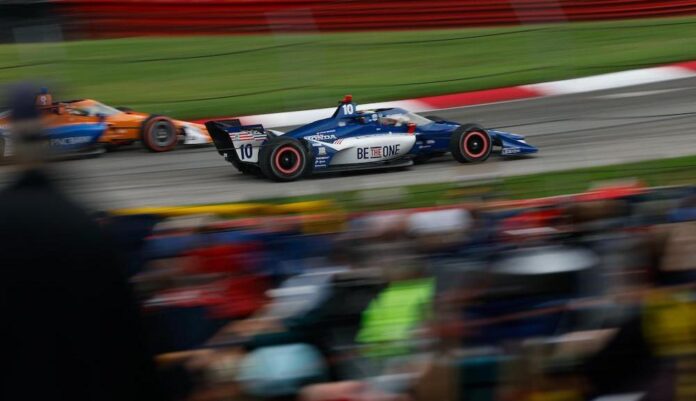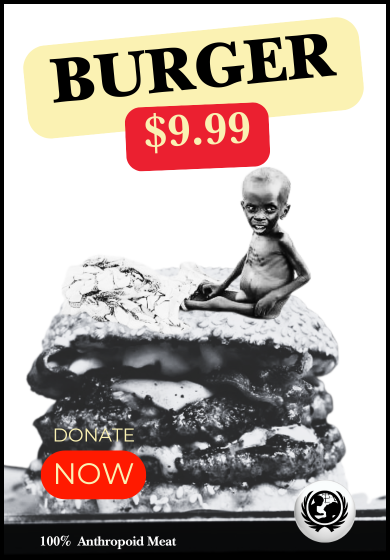Part 2 of RACER’s mid-season IndyCar reflections opens with the most dominant team in the series and follows with a few teams who have no hope of catching them but could contribute one or two drivers to fill some of its upcoming vacancies in 2024.
CHIP GANASSI RACING
Marcus Ericsson, No. 8 Honda, fourth in Drivers’ Standings (-122 points to Palou)
Scott Dixon, No. 9 Honda, second in Drivers’ Standings (-110 points)
Alex Palou, No. 10, first in Drivers’ Standings (377 points)
Marcus Armstrong/Takuma Sato, No. 11 Honda, 17th/29th in Drivers’ Standings (-247 points/-340 points)

Phillip Abbott/Motorsport Images
Alex Palou never scared his rivals. Not like this.
The genial Spaniard has been supremely fast at times since he landed here in 2020, but until recently, he was strictly viewed by his rivals as a tactician, a point-scoring phenom who floated just below the fearsome and uncatchable types like Pato O’Ward and Josef Newgarden when all goes their way.
And then, in a half season of racing, Palou decided to double his career IndyCar win total by turning four into eight while also rocketing to pole at the Indy 500. The last time four wins were taken in the opening nine races, it was in his rookie year while driving for Dale Coyne as future teammate Scott Dixon claimed four victories and went on to lead the championship from start to finish. Dixon didn’t win again in 2020, but he didn’t need to as quality finishes kept the title out of reach from Newgarden.
Palou’s already got the four wins and has yet to finish worse than eighth, and if he can keep the No. 10 Honda off the walls for the majority of the eight races left to run, there won’t be a pressing need to earn more wins, which is scary. And Palou is by no means ready to start coasting, so we can expect to hear him talk about doing nothing different, keeping his head down, and delivering more podiums. All while doing everything in his power to avoid clashes and contact.
He’s proven he can build a gaudy championship lead; now it’s time to prove he can charge to the finish line and add to it.
Dixon’s the closest contender to Palou for the title, although the term ‘close’ is relative since he’s 110 points back after nine races. After nine races in 2022, the championship leader — Marcus Ericsson — was a mere 20 points ahead of eventual champion Will Power. With that 20-point marker in mind, the fact that Palou has amassed more than five times as many points over second place at this stage of the season is just ridiculous.
As for Dixon, he’s still seeking his first win of the season and the big haul of 50-53 points it would deliver. Solving the puzzle of Palou won’t be easy, which is obvious, and if it’s going to start happening, qualifying is the place to affect changes. Complicating matters is how Palou’s become the best qualifier in IndyCar. He’s taken his average starting position through Mid-Ohio in 2022 (6.56) and lowered it by three full spots (3.56). Dixon’s also improved, but his average grid position is well behind his target (7.67).
In nine races this year, Palou’s made an even bigger leap with average finishing results. It was decent a year ago (8.44), but it’s just plain silly now (3.22). His closest rival in this category is Dixon who, again, isn’t all that close (7.11).
Take Palou’s average lead over Dixon in qualifying (4.15 positions) and in the races (3.89), and a combination of overall improvement in both areas for Dixon, along with the arrival of adversity for Palou, is required for that 110-point deficit to diminish. The nightmare scenario for Dixon and Newgarden (-116 points) and the others who have slim chances of overtaking the Spaniard is for Palou to complete the year by hovering around the podium and preventing big swings in the standings.
Even worse for the challengers would be the taking of precious wins by those who aren’t in the title fight. If Palou can’t win, he’s cheering for the Alexander Rossis (-161 points) and Colton Hertas (-173) and Christian Lundgaards (-183) to claim the 50-plus points per round while keeping them out of the hands of the Dixons and Newgardens.
Dixon ventures into the second half of the season with an entirely different mission than Palou. Other than the bruising encounter with O’Ward at Long Beach that left him in last place, he’s been a vision of consistency with every other finish being between second to seventh. If he has any hope of overhauling his teammate, numerous wins and podiums are the only realistic way to get it done.
Yes, Palou’s long overdue for some bad results, but hoping for the championship leader to encounter bad luck isn’t an actual strategy. There aren’t many drivers who’ve proven they can reel in someone like Palou, but Dixon is one of them.

Ericsson’s priority for the remaining races is the same as pretty much everyone else’s – figure out how to stop Palou. Richard Dole/Motorsport Images
As much as we’re watching to see if Palou can keep this amazing streak going, one of the great subplots to track is whether Dixon can be the one to stop it and turn the tables on his outgoing stablemate.
Marcus Ericsson was on a roll entering May and added to his reputation by nearly defending his Indy 500 win. Sure, he was mad at how the red flags and restarts played out, but the bigger takeaway was how his Indy win in 2022 was backed up with a run to second in 2023, and with that kind of output, he’ll be well paid by someone to chase more Indy 500 wins for many years.
A victory to open the year at St. Pete, along with a podium at Long Beach and the second at Indy are his highlights during the first half, and in any other season, those results and holding fourth in the championship after Mid-Ohio would feel wonderful. The growing championship shortfall to Palou—nearly 2.5 race wins at 122 points – is where the feelings turn sour, especially if you consider how Ericsson led the drivers’ standings heading into the month of May.
Like Dixon, Ericsson’s sole focus is on attaining big results as quickly as possible.
By the numbers, he’s second to Palou within the team in both how many times he’s led them qualifying and in being the first driver home at the finish. He’s also improved his average qualifying position over Mid-Ohio 2022 by 1.56 positions, but in line with Dixon, his average starting spot (8.44) is a few rows behind Palou’s average (3.56).
His average finishing position after nine races is slightly down from 2022 (7.33) to 2023 (8.22), and while nobody has been on Palou’s level since May, Ericsson — and Dixon — do have the demonstrated ability to outrun him. Well, at least in the past. But can they with this new version of Palou?
On the same theme as Dixon’s quest for a seventh IndyCar title, Ericsson’s pursuit of his first hinges on making Palou look mortal. It’s a tall task for the pair, but not impossible.
Marcus Armstrong has been a nice addition within Ganassi’s driver ranks. It hasn’t been the smoothest rookie season for the New Zealander or the folks running the No. 11 Honda, but they’re due for a breakthrough result that better reflects the Kiwi’s potential. The team is open to continuing with him but no commitments have been made that we know of, so if sticking around is Armstrong’s desire, he can solidify his position with improved results.
His partner in the No. 11, Takuma Sato, has done well while adjusting to a part-time role with long layoffs between oval outings. The crash while running strong at Texas hurt, but he rebounded at Indy with a drive to seventh.
Unless a Newgarden or similar breaks up the Ganassi party at the front of the championship, we’ll have an old school battle between teammates to claim the IndyCar crown. And if you like drama, that crown will only stay with Ganassi if it’s won by Dixon. Spicy times are ahead.
DALE COYNE RACING
David Malukas, No. 18 Honda, 19th in Drivers’ Standings (-253 points to Palou)
Sting Ray Robb, No. 51 Honda, 27th in Drivers’ Standings (-306 points)

Richard Dole/Motorsport Images
As a rookie, David Malukas drove out of Mid-Ohio last year with his name assigned to 19th in the championship. He started eighth that day for Dale Coyne Racing and finished ninth, which was the best performance of his debut season by early July. He’d go on to take eighth in the second Iowa race and caught everyone’s attention after placing second at WWTR following an epic drive that earned Newgarden’s respect.
And in his second IndyCar season, with another display of oval prowess — this time at Texas — which produced a fourth-place finish, and a sixth just now at Mid-Ohio, Malukas is… 19th in the championship. Some of the poor results, including a series of crashes, have been his responsibility, but some haven’t. And a change in race engineers required a period of adjustment, but that hasn’t been an overall issue.
But it’s fair to say that going from having a veteran teammate and leader like Takuma Sato to learn from as a rookie to being the new team leader as a sophomore, while welcoming an extreme rookie in Sting Ray Robb, hasn’t provided Malukas with the springboard he needed to reach the next level in IndyCar.
Having announced he won’t be returning to Coyne, the 21-year-old will probably look back at 2023 as a year where he made only modest gains in his craft due to the loss of a Sato-like partner to help him refine his vast natural talent.
Even so, Malukas can continue to rise in his final season with Coyne; he climbed from 19th to finish 16th in the standings last year, two spots behind fellow rookie and rookie of the year Lundgaard in 14th. Paired in 2024 with a veteran/mentor like Dixon or a Ericsson or a Rahal or a Carpenter, Malukas could make gains like Lundgaard, who’s 10th in the championship after Mid-Ohio.
Robb has talent, but I don’t know if he’s got a long future in IndyCar. It’s not that the Idahoan doesn’t belong, but his rookie season has been the most binary thing in the series this year: He’s either causing or caught up in someone else’s yellow or red flags, or running anonymously towards the back of the field. There’s been no middle ground.
After nine races, Robb is last in the championship, and while that’s by no means a first for a rookie, the thing we haven’t witnessed is a performance that suggests significantly better days are ahead. On the positive side, he’s finished three consecutive races, which is a major development. All three were in 22nd place. And while Robb isn’t sitting in a car that presents the same chance to shine like fellow rookie Marcus Armstrong at Ganassi, it’s tough to ignore the difference in outcomes – after two relatively trouble-free runs at Mid-Ohio – that saw Malukas claim sixth while Robb was 16 positions behind in 22nd.
A few finishes inside the top 20 would do wonders for Robb’s stock value and Coyne’s bottom line. Everyone at DCR will be rooting for Robb to find another gear since Coyne’s at risk of losing the $1 million Leaders Circle contract for the No. 51 Honda. It sits five positions out of the top 22, and only the top 22 in Entrants’ points get the contracts.
The pressure on Robb to perform for Coyne – and to keep his seat – for the next eight races will be unlike anything he’s experienced in the sport. The good news is he has the ability to improve. The bad news is there’s a long line of drivers, most of whom have deeper bank accounts, who want to be in the No. 51 Honda next year.
ED CARPENTER RACING
Ryan Hunter-Reay, No. 20 Chevy, 28th in Drivers’ Standings (-333 points)
Rinus VeeKay, No. 21 Chevy, 16th in Drivers’ Standings (-236 points to Palou)

Motorsport Images
Rinus VeeKay had earned a sixth at St. Petersburg, a 10th at Texas, a pole and podium at Barber, and a fourth at Mid-Ohio after nine races in 2022, and was 12th in the championship.
As the only real year-to-year benchmark left to use while appraising Ed Carpenter Racing’s 2023, VeeKay featured again in qualifying for the Indy 500 and finished 10th in the race, but unlike the four early top 10s last year, Indy serves as the Dutchman’s only top 10 of the season.
He’s also fallen from 12th to 16th in the standings which, in light of the team’s ongoing competitive shortcomings, isn’t terrible. But it’s also worth noting that Ganassi rookie Armstrong — who earned zero points from not racing at Texas or Indy — is only 11 points behind VeeKay in 17th.
The good news for VeeKay is he can make serious headway towards reaching the top 10 by the end of the year; he’s just 53 points back from Lundgaard in 10th. But is that a reasonable expectation to place on the 22-year-old? Probably not. VeeKay’s championship retreat is a perfect reminder of how a team’s sudden downturn can remove a driver’s name from the spotlight, as his former teammate Conor Daly can attest.
Ignoring the tense relationship side of things between the team and Daly, dropping him in favor of Ryan Hunter-Reay — a proven standard — became an uncomfortable option when the team remained lost after the Indy 500. If a change was going to be made, VeeKay was 15th in the championship and Daly was 20th, so parking the guy in 15th wasn’t going to happen. The roots of the problem, however, arose after ECR made a bold decision during the offseason.
As mentioned in our season preview, ECR stood out in the paddock as the only veteran team entering the new championship to make no major additions or changes to its team in areas that would directly boost its results. The experiment of trying to improve by standing still has led to exactly that: standing still. They team is always good at the Speedway, so that wasn’t an issue to address, but drafting in Hunter-Reay to be half driver/half forensic investigator was done out of necessity because neither VeeKay nor Daly were shining a light on how ECR was going to find its way out of the road and street course darkness.
VeeKay has another year left on his contract, so he’s hoping ECR gets better, and faster, ASAP. His market value depends on it. Hunter-Reay is already making significant contributions to the team in ways that extend far beyond wherever he finishes, and while the team is talking to a number of drivers about the No. 20 Chevy for 2024, there’s a lot of work to come before the renovation is complete. It won’t be a case of ‘job done’ by the season finale in Monterey.
Many of the teams in the vicinity of ECR like Foyt, Meyer Shank, and RLL are just as disappointed in their seasons and are hellbent on getting better. The race to leapfrog each other is on, and with it, the recruiting wars are also in motion as they vie for the services of many of the same people who can make a long-term difference. The results from the next eight races will determine if ECR’s near the head of the recruiting line.
JUNCOS HOLLINGER RACING
Callum Ilott, No. 77 Chevy, 15th in Drivers’ Standings (-235 points to Palou)
Agustin Canapino, No. 78 Chevy, 24th in Drivers’ Standings (-282 points)

Michael Levitt/Motorsport Images
It feels like a year has passed since the opening rounds of the season for the best David-vs-Goliath story in IndyCar when Callum Ilott and open-wheel novice Agustin Canapino were so compelling to follow.
For Ilott, who opened the season with finishes of fifth and ninth, the fairytale start to his sophomore campaign ended at Long Beach when he was greeted overnight by unexpected changes to the curbs that fired his car into the wall. Well behind the rest of the field afterwards, the weekend devolved for Ilott and Canapino, and in the race, the feel-good vibe at Juncos Hollinger Racing unraveled.
JHR was met with an ugly scene where Canapino — leading after being left out while the rest of the field pitted — encountered Ilott, who was trying to avoid being lapped. Canapino eventually crashed, clashing with Helio Castroneves as well beforehand, and thanks to the blame-filled reaction from his home broadcasters, a huge volley of online hate — including death threats — was aimed at Ilott and his family. JHR pressed on and put the incident behind them, but the fractures remained, which reemerged in May when the team were slow to act when Ilott’s car was painfully uncompetitive at the Speedway.
To his and their credit, Ilott charged to place 12th in the 500 with a replacement chassis, which answered any questions as to whether he’s skilled on ovals, but the month was exhausting. The feel-good vibe has mostly returned inside the JHR camp, too, but the team has suffered a decline in overall performance while some of its bigger rivals have motored by.
Despite the recent slide, Ilott arrives at Toronto wedged between Graham Rahal and Rinus VeeKay in the standings, and considering how those two placed 11th and 12th in last year’s championship, the Briton has a reason to feel encouraged for where he and the No. 77 Chevy program can go if JHR can find some additional speed. Ilott’s greatest year-to-year improvement has been in the races where his average finish through Mid-Ohio in 2022 (19.75) has leapt by 4.53 positions (15.22) in 2023. His oval performances have also been astounding where he’s become the biggest gainer in the field, turning last year’s average finish (24.00) into a massive 13.5-position jump (10.50).
The team has taken a step backwards in average qualifying, though, as the No. 77 Chevy’s number through nine races in 2022 (14.88) is 5.12 places lower (20.00) through Mid-Ohio. In what’s become a fairly standard note for plenty of teams and drivers, addressing JHR’s shortcomings in qualifying would make life easier in the races with fewer positions needed to be gained.
Canapino’s amazing rookie season has also been stuck in reverse since he finished 12th at the first two races. Since Long Beach, six of his last seven results have been 19th or worse. A recent change of race engineer to the veteran Mike Colliver should help get the Argentinian back in the groove.
There’s no doubt as to whether Canapino is exceptionally talented, and he’s also shown himself to be a fast learner. If he and Colliver can form a quick bond, the No. 78 Chevy will move up in the championship by a few positions, and that’s important because at the moment, they’re just below the cutoff to earn one of the $1 million Leader Circle contracts.
Canapino and the No. 78 are 24th, nine points behind 22nd, and of all the goals they have to meet before the season’s over on September 10, grabbing that $1 million is a big one to make happen.



